How to Teach Music Literacy Skills Using Vocal Solfege Warm Ups
Multitasking vocal solfege warm ups help develop students’ music reading skills in an efficient method to maximize limited classroom time.
Some of the links on our site are affiliate links. If you click on a link and make a purchase, we may earn a small commission.
Tick, tick, tick, tick.. . . . There is SO much to squeeze into each class session, but the clock just keeps on ticking. 🕒
Like me, I know you’re always looking for ways to naturally “sneak in” more music literacy activities. Using fun vocal solfege warm ups which develop music reading and performance skills is one efficient and effective way to multitask.
“Sneaky Learning” is one of my favorite teaching techniques. I like to slip in the learning and reinforcement of important skills into fun class activities. 😊
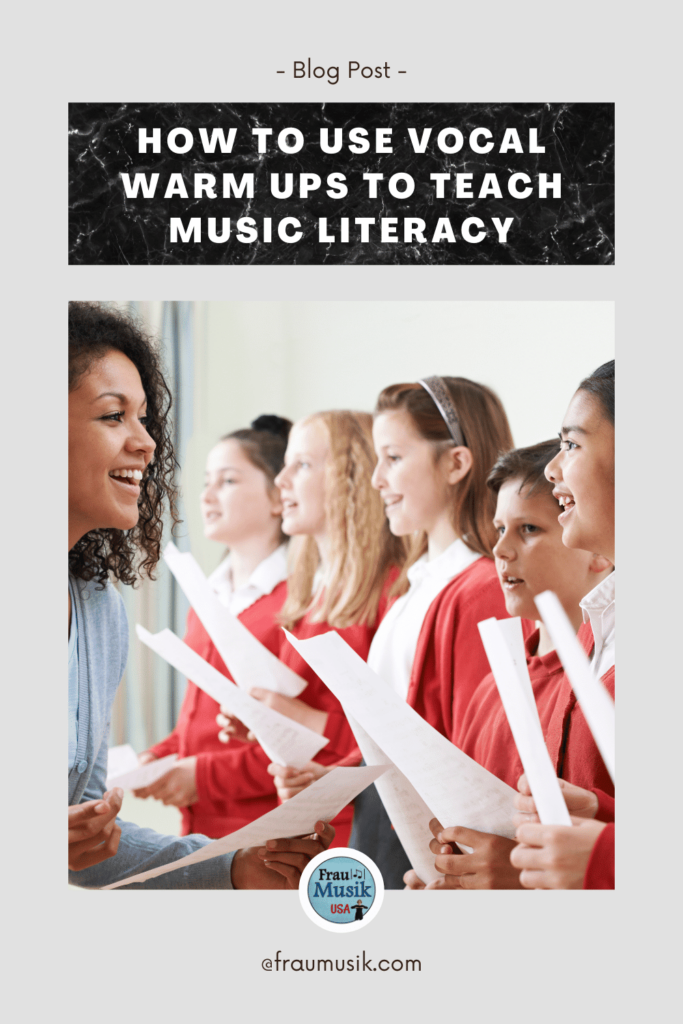
What’s in this post? Click to open the Table of Contents
- A Few Simple Vocalization Ideas
- 3 Simple Steps for Using Vocal Solfege Warm Ups for Music Literacy
- Perfect Opportunity to Teach Movable Do
- Use this Tip to Teach Key Changes
- Add a Kinesthetic Element to Cement Learning
- Add a Few Prompts to Provide Differentiation and Jump-Start Learning
- Make Practicing Diction Fun!
- Focus on One Element at a Time
- Should You Play the Melody? Chords? Both?
- Take Care While Expanding Students’ Vocal Range
- How to Use “Just-in-Time” Design
- Reinforce Targeted Pitches
- Keep it Short, Efficient, and Effective
- Need a Sequential No-Prep Bundle?
- Video is Worth So Much More Than Words
- Conclusion
A Few Simple Vocalization Ideas
Many different vocalization activities are helpful as an initial warm up. A short list is below.
- Sirens
- Bubbling or Buzzing
- Ghost Voices
- Yawn or Sigh
- Humming
- Vocal Slides
- Follow the Melodic Contour Activities
Use a flashlight, laser pointer, bean bag, ball, scarf, or another object to indicate a melodic contour. Or, follow the shape of graphics displayed on a whiteboard.
Now, let’s talk about melodic solfege warm ups to develop music literacy skills.
3 Simple Steps for Using Vocal Solfege Warm Ups
Follow these 3 Steps for Reading Music to simplify the process and develop a concrete system for students.
- Read the rhythm.
- Sing the pitches.
- Add the lyrics.
Rhythm. The rhythm patterns used in most warm ups are usually simple but don’t ignore the rhythm. You have students with varied abilities who will benefit from reading simple rhythm patterns. So, read the rhythm on the first day you introduce a new warm up.
Pitch. Begin with a limited number of pitches. Depending upon the age and experience of your students, consider starting with So Mi or Do Re Mi. Your students will be much more successful when you start at an easy, attainable level and build from there.
Repetition. Practice each solfege warm up a minimum of 4-5 class sessions. Depending on how many times you see your students, introduce a new warm up each week or every other week.
Reinforcement. Use multiple warm ups to reinforce the same pitches in each sound set.
Introduce One Element at a Time. Introduce only one new pitch at a time. Ensure students have a firm foundation in reading and singing assigned pitch sets before you move to the next.
The Perfect Opportunity to Teach Movable Do
Warm ups typically modulate between several different keys. This automatically provides a natural way to learn about movable Do.
Initially, beginning music students will not recognize the function of sharps and flats in key changes. They will, however, notice the notes move up or down the staff as the keys change. For this reason, I recommend you use diatonic key changes for beginners instead of chromatic key changes. This is illustrated in the images below.
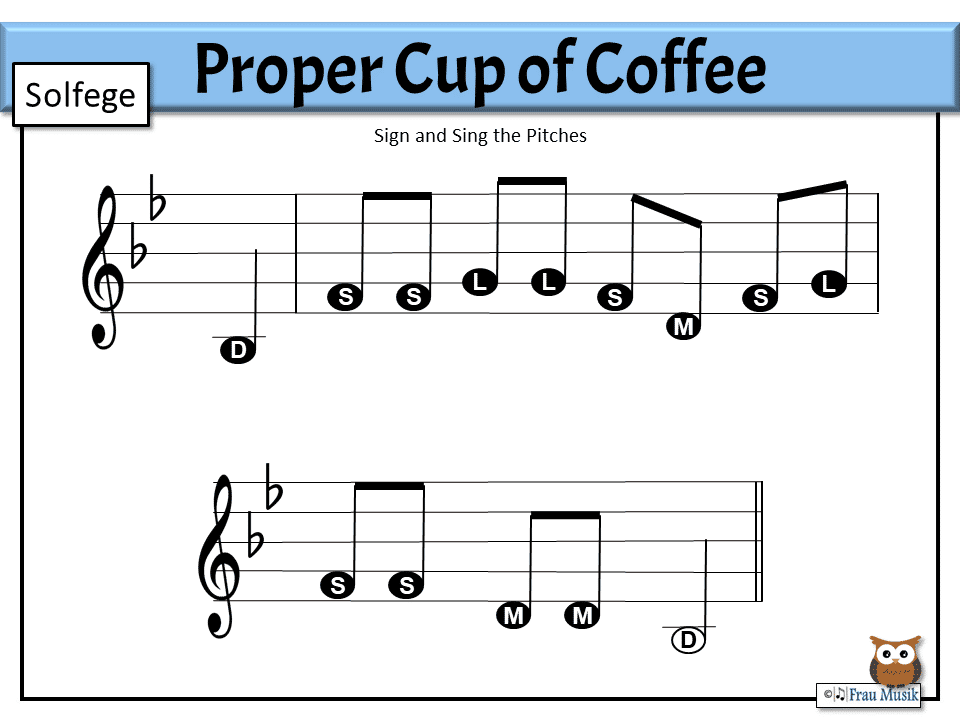


Call students’ attention to the key signatures. Students do NOT need to know key signatures, but they do need to be aware they change. When you lay this foundation early the concept of key signatures will be much more understandable later.
Use this Tip to Teach Key Changes
When you first teach beginning students about key changes and movable Do, consider having them sing “key change” as you play the modulation. Then, as students become more comfortable, have them think “key change” and make the modulation silently.
When you use this technique, I guarantee your students will become much more aware of key changes as they listen to music.
Add a Kinesthetic Element to Cement Learning
When you teach solfege hand signs, require your students to anchor their signs on specific locations of their bodies. This helps them to conceptualize the relative position of each pitch. Students often change the shape of their hand(s) without demonstrating So is higher than Mi, etc.
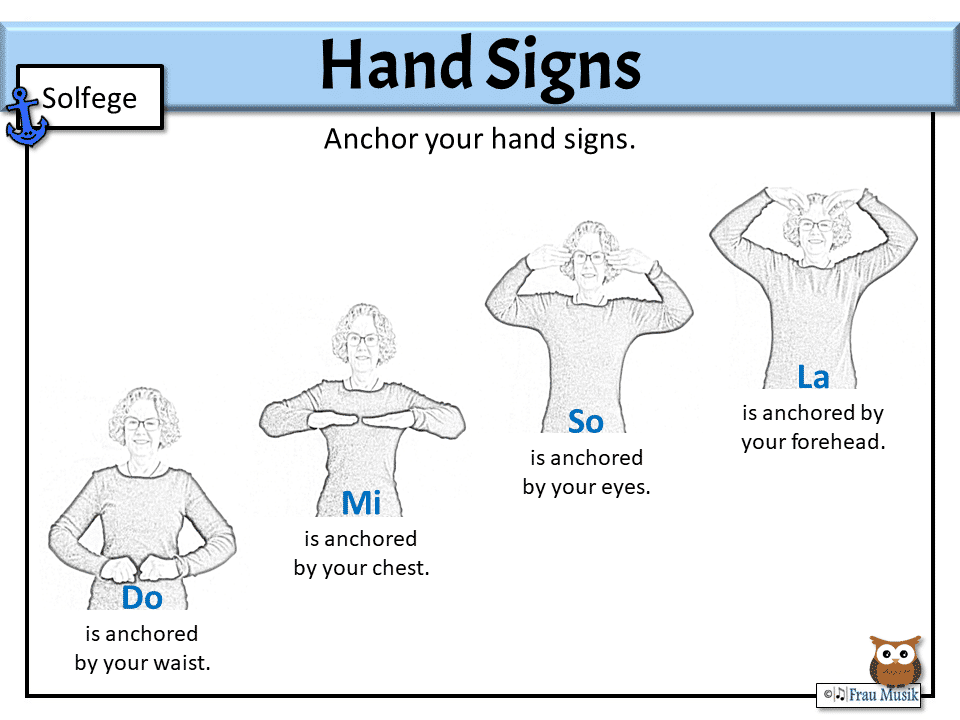
Prompts Provide Differentiation and Jump-Start Learning
Depending upon the level and prior knowledge of your students, notate the first few warm up slides with solfege note name prompts. Add prompts to the note head to focus students’ attention directly on the note. When you add the pitch names as lyrics this becomes a distractor. See the example below.
Gradually eliminate prompts as you progress through the modulations.
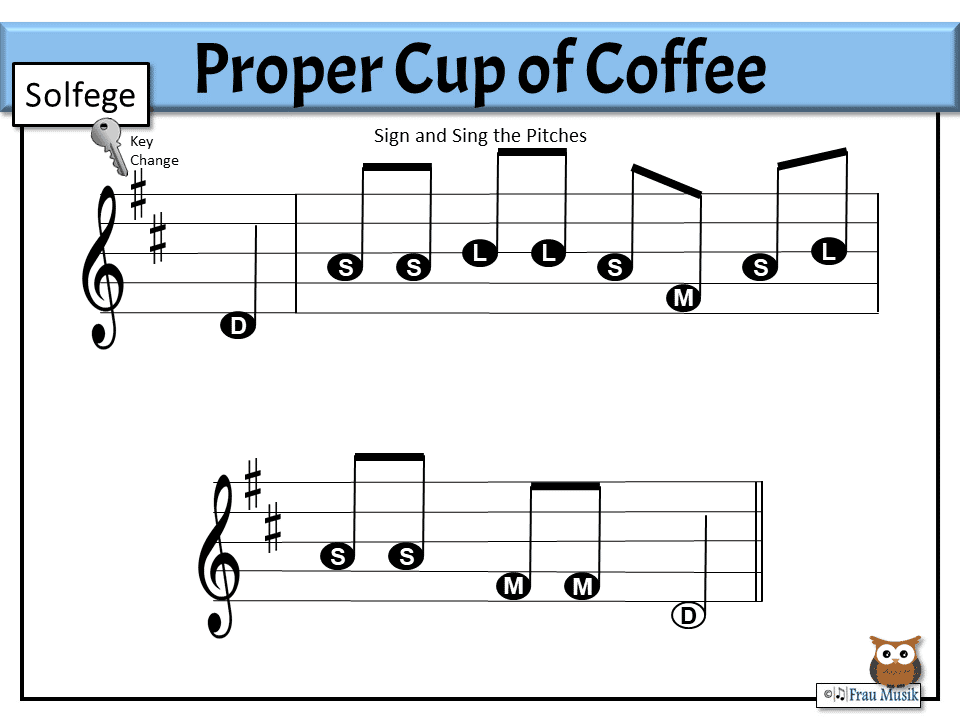
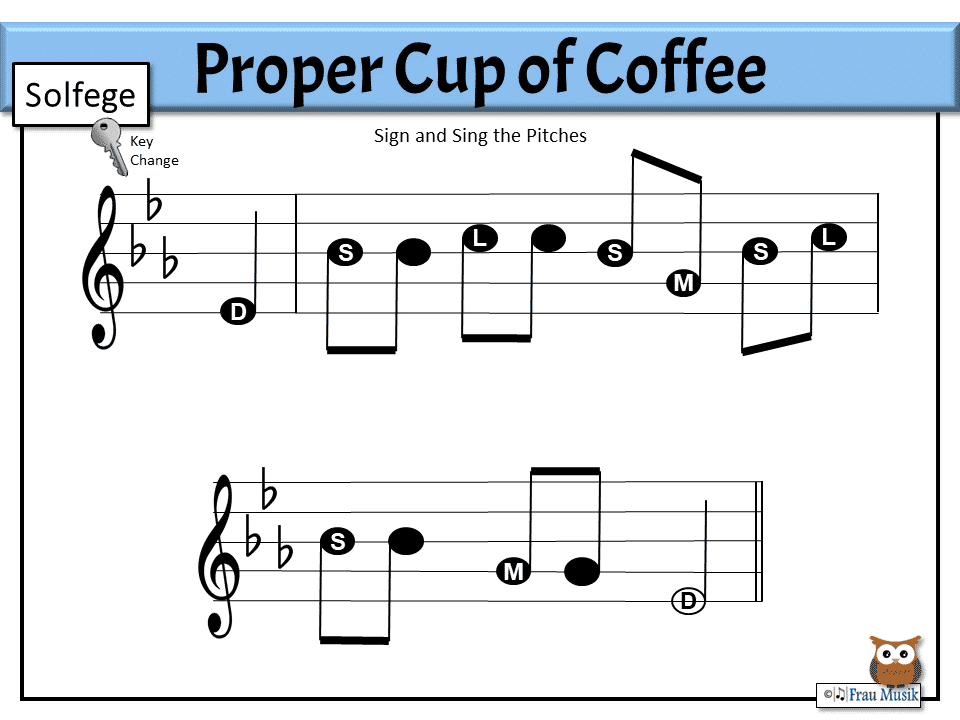

Important Note: When you add prompts directly to the note head, you ensure students focus on the exact part of the note which determines the pitch. Please do NOT add the pitch names in place of the lyrics.
Make Practicing Diction Fun!
Tongue Twisters are FUN vocal warm ups. If you use any word combinations that may be hard to pronounce, be sure to practice speaking the lyrics slowly with clear, crisp diction prior to singing.
Focus on One Element at a Time
Are you like me and you want to correct and improve EVERYTHING all at once? I know you’re tempted. We’re music teachers and we hear every little thing that isn’t quite perfect. Resist the temptation and focus on one element at a time. Focus on the pitch first.
During the next class sessions, focus on other musical elements.
- Pitch
- Diction
- Tone
- Phrasing
- Dynamics
- Tempo, etc.
This will allow for some variation during each rehearsal and address all musical elements. As you focus on different elements ensure students maintain the proper pitch, diction, etc. that you targeted during a previous lesson.
Should You Play the Melody? Chords? Both?
Keep the accompaniment simple. Do NOT play the “melody” of the warm up. You want to teach students to become independent singers. Simply play the chords to establish the key.
If possible, play left-hand chords on the piano while you demonstrate the solfege hand signs with your right hand. Or, choose a student to lead the hand signs if your students need guidance.

Take Care When Expanding Students’ Vocal Range
Take into consideration the best vocal range for your students. Warm ups may go higher than some students are ready for. Be ready to stop at any point. Do NOT push young students too high.
If you want to encourage some students who are ready to expand their range, allow others to drop out and lip sync or demonstrate the hand signs if the pitches get too high for them. Students should not stop participating. Keep them engaged.
How to Use “Just-in-Time” Design
Design your warm ups to focus student attention. Introduce elements “just in time”. If you want students to sing the pitches, do NOT include the lyrics on the slide. Otherwise, students will focus on the wrong element.


Reinforce Targeted Pitches in Repertoire
During class or rehearsal, ask students to identify the targeted warm-up pitches and intervals in the current repertoire. After all, the ultimate goal is to read and perform music – to become musically literate.
Keep it Short, Efficient, and Effective
Warm ups should only be a short portion of each class. Develop a system that is efficient and effective. You can accomplish all of these tasks in the first 4-5 minutes of class or less.
Check out our Sequential No-Prep Solfege Warm Ups Bundle
Are you short on time? Do you need a fun, NO-PREP resource? This Tongue Twister Warm Up BUNDLE includes 20 projectable ready-to-use warm ups with simple piano accompaniment.
Bonus: The PowerPoint presentations are 100% compatible with Google Slides.
Video is Worth More Than Words

Conclusion
We cannot stop the clock from ticking away but we can use the class time we have efficiently Developing music literacy does not have to take a lot of class time. But, you do have to plan carefully to Integrate Music Reading into EVERY Class. Vocal tongue twisters warm ups are a FUN multitasking way to enhance your music literacy plan.
Meet the Author
Terri Lloyd is a former elementary music teacher with over 25 years of experience. She holds a Bachelor of Music, a Master of Science in Education, and a Technology Certificate in Instructional Design.
Terri is active in music education through blogging, presenting and attending workshops, and curriculum development. She serves on the music staff at her church and volunteers for an after-school children’s program. Terri is an active musician in the community, performing in a local Big Band, pit orchestras, and various events.

2 Comments
Comments are closed.